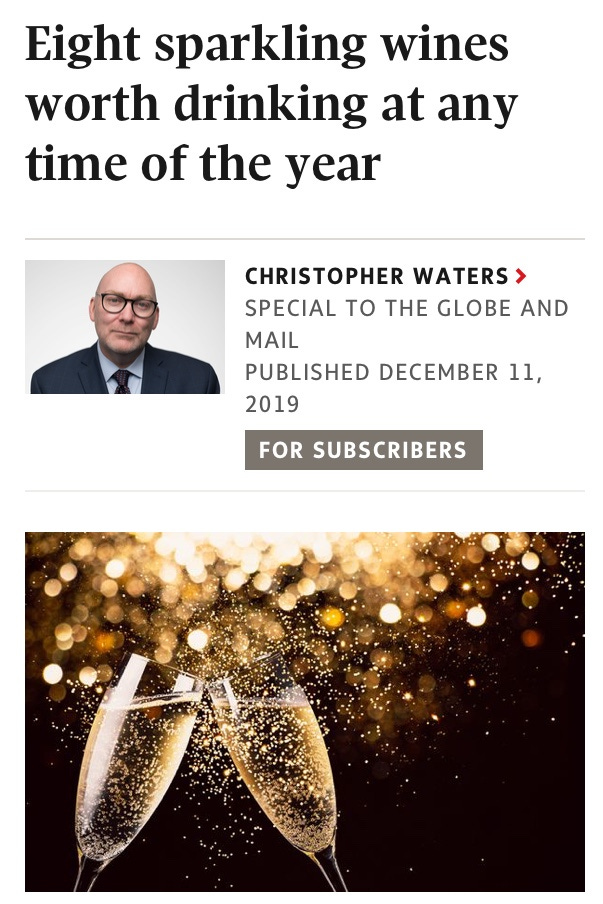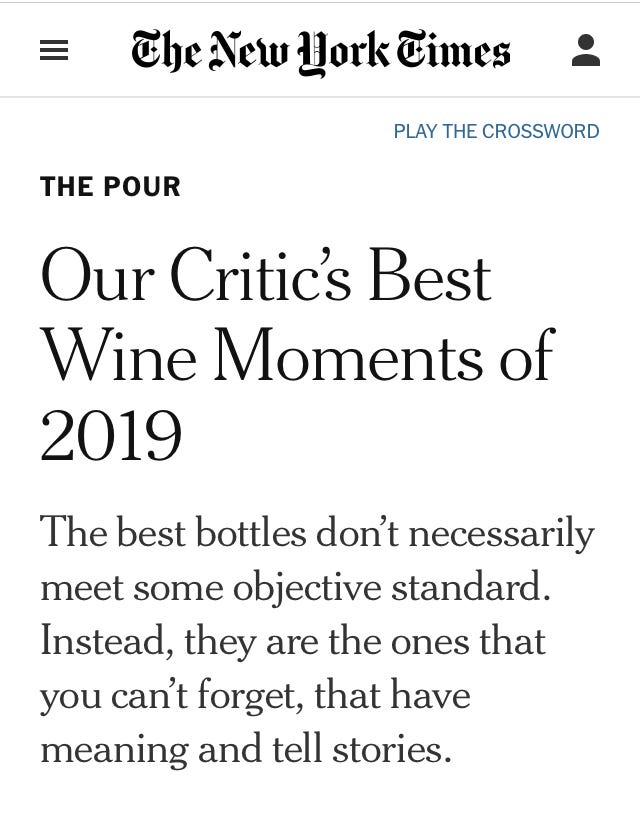Gettin Fizzy With It
‘Tis the Season for Bubbles. With the holiday season here, and the majority of sparkling wine being purchased leading up to NYE/as I type this, here’s a bit of a primer of which fizz is which: Champagne is sparkling wine that comes from the Champagne region of France. It can come from a ‘Big House’ — like Veuve and Moët, who buy grapes from different growers (designated by NM for Negotiants Manipulants) — or it can be produced by the same estate that owns the vineyard, called Grower Champagne (designated by RM for Récoltant-Manipulants), such as Geoffroy, Leclerc Briant, and William Saintot. Pétillant Naturel, or Pét-Nat, is the OG way to make champagne, made by a method so old that the French term for it is methode ancestrale, where the wine is bottled while it’s still fermenting. Canadian wineries producing this more natural fizz include Trail Estate, Benjamin Bridge, Bella Wines, Traynor, Leaning Post, Hinterland, and Domaine du Nival, to name a few. Sparkling wine made with the same technique as Champagne, but from outside the region, are called crémants; while those made in the Penedès region of Spain are called cava (such as Segura Viudas, a “reliable, inexpensive bubbly” as per Wine Align’s Annual Fizz Report); and those made in the Veneto and Friuli-Venezia Giulia regions of Italy are called Prosecco. There are other types of sparkling wines, but I’ll stop here before you stop reading this and run out for a glass of bubbly. Also I can’t think of bubbly without thinking of Maya Rudolph saying “Bubble Bath”.

Memorable Bottles of 2019. A few publications have started to share their fave wines of the year, including Eric Asimov's best wine moments and Bloomberg’s best 50 under 50. Both have in common the Trebbiano made by Cristiana Tiberio (who believes “that you can only truly make a wine with the greatest expression of the place if you have lived there and really understand the climate and sense of the place”) of Agricola Tiberio in Abruzzo, Italy. Asimov’s pick is the Fonte Canale 2015, a harder-to-find single-vineyard wine, which he described as ‘‘gorgeous, intense wine with salty, minerally flavors”. While Bloomberg’s was the 2018 Tiberio Trebbiano d’Abruzzo, which is sometimes available at the 49 Spadina LCBO, or by the case from Halpern. I particularly liked Asimov’s take on his best bottles which “don’t necessarily meet some objective standard,” and instead are the ones “that have meaning and tell stories.” While I would never deign to suggest I am worthy of being in the company of Asimov, I was inspired to compile a few of my own memorable bottles of the year including: 2017 Laurent Saillard’s Joy Full, a Cabernet Franc made by a guy who used to be a chef and now makes wine in the Loire Valley; 2017 Vins Pirouettes LeBrutal de Jean Marc, a skin-contact Gewürztraminer/Pinot Gris/Riesling from Alsace, made by a loose conglomerate of natural winemakers; 2017 Shobbrook See Change, a Mourvedre made by Tom Shobbrook in Australia who thinks of wine like a diary: “It shows how you make your wines because of what you’ve tasted or what you’ve seen or where you’ve worked”; 2018 Rennersistas Waiting For Tom rosé, a blend of Zweigelt and Blaufränkisch, made by two sisters in Austria; and the 2016 Yaacov Oryah Jemma, a skin-contact Semillon made in the Judean Hills by a winemaker that challenges conventions and has an uncontrollable urge to be experimental.

Opinions on Opinions. The NY Times published an opinion piece by Alice Feiring on the natural wine movement and the need to protect it: “But any successful movement, whether in politics or viniculture, is vulnerable to corruption… natural wine is coming under threat by opportunists and big business… but the notion of government intervention seems loathsome to a movement started in the spirit of anarchy.” There was no shortage of opinions on Feiring’s opinion. One Twitterer said the piece was “exclusionary and written from a soapbox”; and meme-maker Adam Vourvoulis posted his opposition saying: “Don’t champion this hypocrisy.” Wine writer Rachel Signer acknowledged the negative reaction to the piece, but called for more education and transparency: “…what Alice outlines is definitely worthy of some outrage, as it's a clear attempt to co-opt something beautiful and therefore, it's more important than ever that people who care about natural wine speak up and educate consumers and the mainstream media.”

LCBO Annual Report and Other Wine News. The LCBO released its 2018-19 Annual Report, and while craft beer and cider sales both increased (20% and 42% respectively), VQA wine sales only increased 0.2%, as tweeted by Robert Benzie. Consignment warehouse and private ordering reached 18,000 product listings in 2019, up 14% from the previous year, and up 30% since 2015 (page 74 of the report). The LCBO Consignment Program is what permits agents to warehouse and distribute specialty products by the case; so this would include natural and low-intervention wine, as well as other wine, beer and spirits. We can’t know how much of the listings would be considered natural wine, but it makes sense that that number is rising given the rise of natural wine. Just my unscientific observation! Also the Grape Witches announced their first scholarship for those looking to enter the wine industry. The winner will receive an introductory course from the Sommelier Factory, a paid internship with the Grape Witches, and a coaching session; the deadline to apply is Friday, Dec. 20. GW also offered up some of their wine picks in The Kit’s Wine Gift Guide. And lastly, Toronto has a new natural wine spot called HAPPY Coffee and Wine (1304 King St. W), which has been added to the unofficial Toronto Natural Wine Guide.



